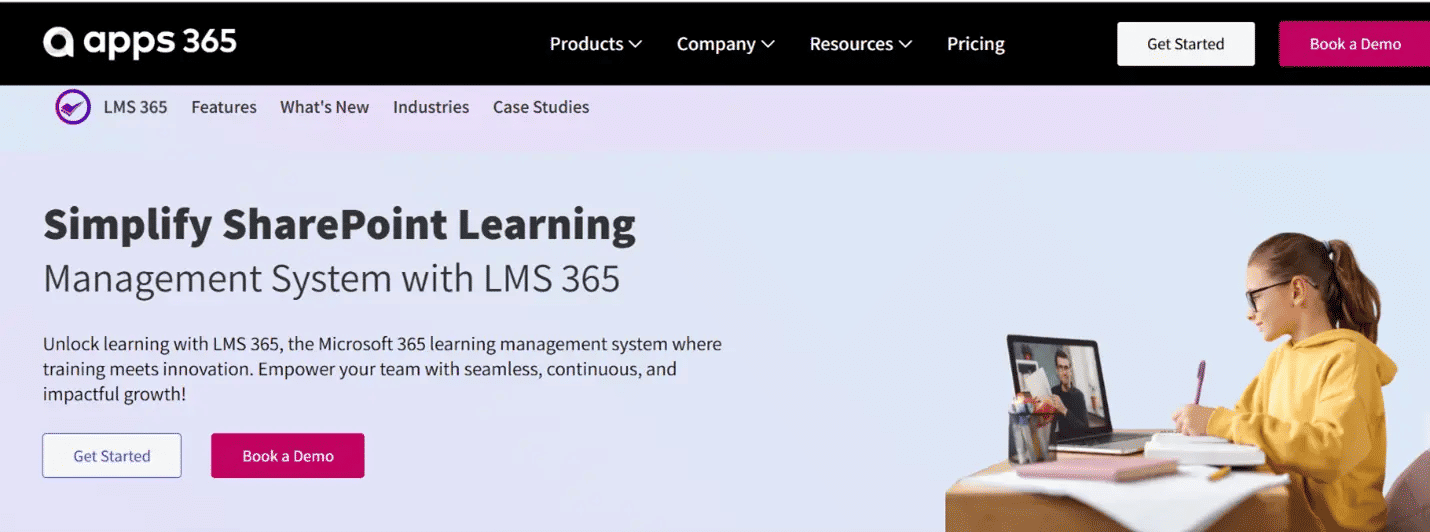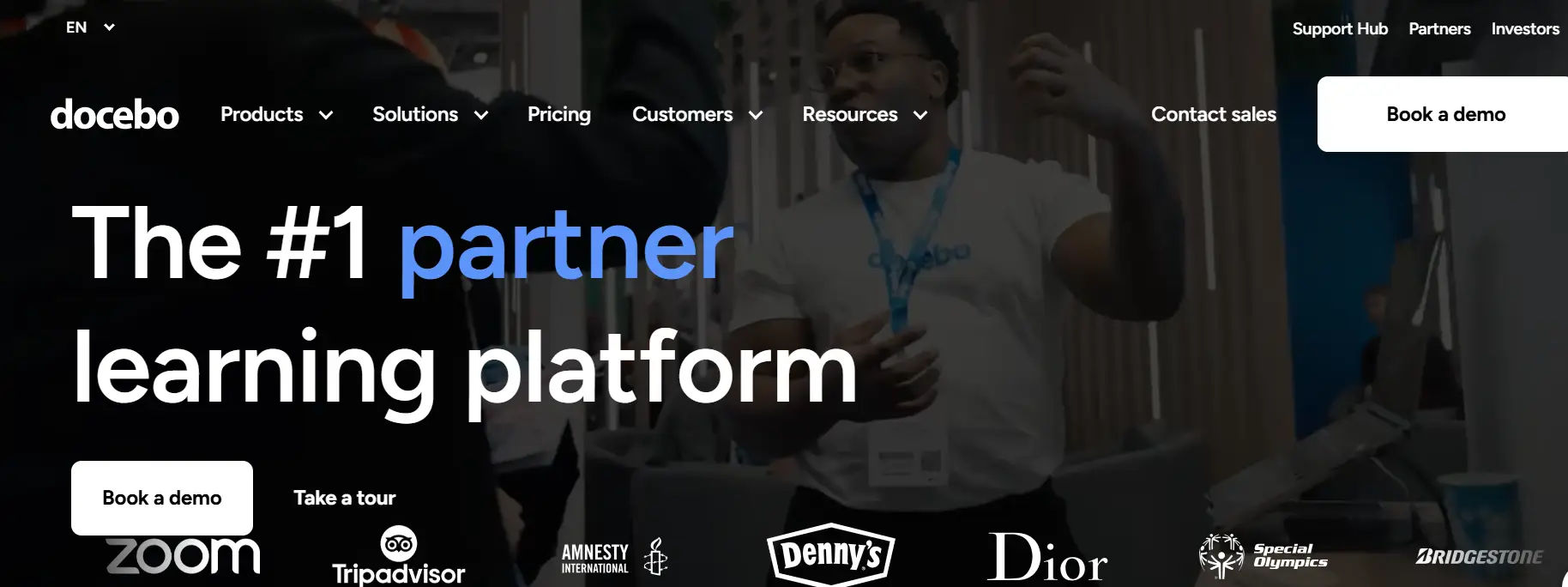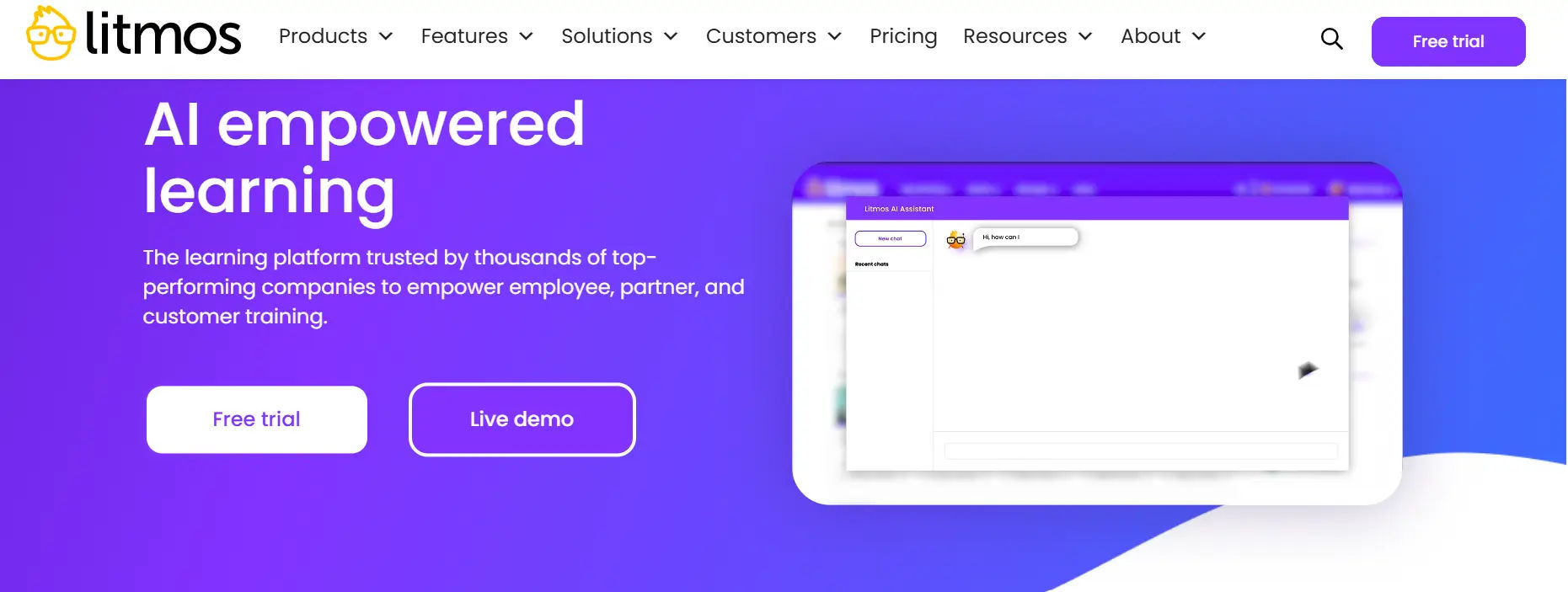
SaaS LMS: Transforming How Companies Learn and Grow
Growth begins with learning, and the most successful companies know it. A SaaS LMS (Software-as-a-Service Learning Management System) turns training into a powerful force for progress, helping teams stay inspired, skilled, and connected no matter where they work.
✨
Quick Read
Summary generated by AI, reviewed for accuracy.
A SaaS LMS (Learning Management System) transforms company learning with a flexible, cloud-based platform that replaces outdated training methods. Employees can learn anytime, anywhere, while features like mobile access, analytics, gamification, and integrations make learning engaging and measurable.
For growing organizations, a SaaS LMS delivers scalability, cost savings, and smarter onboarding without IT hassle. It empowers teams to align learning with goals, track progress in real time, and build a culture of continuous development that drives business growth.
Instead of viewing learning as an obligation, leading organizations see it as an opportunity to elevate their people and performance. According to LinkedIn Learning , 76% of employees are more likely to stay with companies that invest in professional development, while nearly half feel disengaged when growth opportunities are missing. That’s why more businesses are turning to modern, cloud-based LMS SaaS platforms tools designed not just to teach, but to transform.
With a SaaS LMS system, learning becomes seamless, accessible, and personalized. It bridges the gap between potential and performance, empowering teams to grow together and succeed faster than ever before.
The Shift: From Traditional Training to SaaS Learning
Training has come a long way from classroom sessions, printed guides, and scattered files. These older methods often slow teams down they are expensive to maintain, hard to track, and nearly impossible to update quickly.
A SaaS LMS changes that story. It brings all learning into one simple, cloud-based platform where employees can access courses anytime and from any device. With a LMS SaaS system, managers can create, assign, and track training in just a few clicks.
No more outdated materials or messy spreadsheets everything stays organized, updated, and easy to measure. This shift to digital learning makes training faster, more flexible, and far more engaging for every team member.
What Is SaaS LMS?
A SaaS LMS (Software-as-a-Service Learning Management System) is a cloud-based platform that makes training easier, smarter, and more accessible for every employee. Instead of complicated setups or manual software installations, everything runs online meaning your team can learn anywhere, anytime, on any device.
It’s more than just software; it’s a complete learning ecosystem that helps companies manage, deliver, and measure employee development without technical headaches. Whether you are training five people or five thousand, a SaaS LMS system grows with your business effortlessly.
Key Features of SaaS LMS Solutions
- Cloud-Based Convenience: No downloads or servers needed. Access your LMS through a simple web browser.
- Subscription Model: Pay only for what you use no heavy upfront costs or hidden fees.
- Automatic Updates: Always run on the latest version with new features and security improvements.
- Mobile Learning: Employees can complete training on laptops, tablets, or phones anytime, anywhere.
- Seamless Integrations: Connects easily with HR, CRM, and productivity tools like Microsoft Teams.
- Real-Time Analytics: Track progress, completions, and engagement instantly with smart dashboards.
- Custom Branding: Personalize the look and feel to match your company’s identity.
- Gamification: Boost motivation through quizzes, badges, leaderboards, and rewards.
- Multi-Language Support: Perfect for global teams and diverse workplaces.
- AI-Powered Recommendations: Some systems suggest courses based on role, interests, or past performance.
- Secure and Compliant: Built with enterprise-level data protection, encryption, and compliance features (GDPR, ISO, SOC 2).
Why Businesses Need SaaS LMS Solutions
When a company invests in its people, growth follows naturally. But as teams expand, keeping everyone aligned and well-trained can quickly become overwhelming. Without a structured learning system, new hires feel lost, managers spend hours filling knowledge gaps, and training becomes inconsistent across departments.
A SaaS LMS solves this by giving growing businesses the structure, flexibility, and insight they need to keep learning on track. It acts as a single hub for all training helping organizations deliver knowledge faster, smarter, and with measurable results.
Challenges Companies Face Without a SaaS LMS
- Scattered Learning Resources: Training materials live in multiple folders, emails, or tools making it hard to find the right content when it’s needed most.
- Slow and Costly Onboarding: Manual onboarding wastes time and money, while new employees take longer to reach full productivity.
- Inconsistent Training Quality: Different teams receive different information, leading to confusion and performance gaps.
- No Clear Visibility: Managers struggle to track who completed what, or how training impacts performance.
- Low Engagement: Employees lose interest in outdated methods like long PDFs or endless slideshows.
- Limited Scalability: As the company grows, old training systems can’t keep up with new demands or larger teams.
How SaaS LMS Solutions Bridge the Gap
A LMS SaaS platform brings everything together in one connected space courses, analytics, communication, and progress tracking. It gives HR and L&D teams the tools to build engaging learning paths, automate onboarding, and monitor progress in real time.
With a SaaS LMS system, companies can:
- Keep training consistent across departments and locations.
- Personalize learning paths for different roles and skill levels.
- Automate course reminders and certifications to save admin time.
- Use analytics to understand training impact and ROI.
- Keep employees motivated through gamified, mobile-friendly learning.
A cloud-based learning system turns training into a strategic advantage not just a checklist. It helps companies scale smoothly, empower employees, and create a culture where learning fuels growth.
Key Benefits of a SaaS LMS
A SaaS LMS does much more than deliver online courses it transforms how teams learn, grow, and perform together. It gives organizations the tools to train smarter, scale faster, and stay competitive in a changing world.
Here are the top benefits that make SaaS-based learning systems essential for modern businesses:
1. Scalability and Flexibility
A SaaS LMS system grows at the same pace as your business. Whether you are training ten employees or ten thousand, the platform scales instantly no extra hardware, IT setup, or downtime required. This flexibility helps expanding companies maintain consistent learning experiences, even across multiple offices or countries.
2. Cost Savings
Traditional training costs venues, travel, printed materials, and instructor fees add up quickly. By moving to a LMS SaaS model, businesses can reduce training expenses by up to 40%. The subscription model spreads costs evenly, making it budget-friendly while providing more value through automation and analytics.
3. Faster Onboarding
A Learning Management System standardizes onboarding, ensuring every new employee receives the same high-quality introduction to your company. According to LinkedIn , structured onboarding reduces ramp-up time by nearly 40%, helping new hires feel confident and productive from day one.
4. Better Engagement
Today’s learners want interactive, enjoyable experiences not static PowerPoints or lengthy manuals. LMS platforms use gamification, microlearning, and multimedia content to keep training fun and relevant. When employees enjoy learning, engagement rises, completion rates improve, and retention increases naturally.
5. Data-Driven Decisions
A SaaS LMS system turns data into insight. Real-time dashboards show who’s learning, what skills need improvement, and how training affects performance. Managers can track completion rates, assessment scores, and engagement metrics all in one place to continuously refine training strategies.
6. Compliance and Risk Management
In industries like healthcare, finance, and manufacturing, compliance is not optional it’s mandatory. A LMS SaaS automates reminders, tracks certifications, and stores records safely, ensuring your team stays compliant and audit-ready. This reduces the risk of penalties and builds trust with regulators and clients alike.
7. Mobile Learning
With today’s distributed workforce, training must fit into flexible schedules. A SaaS LMS supports mobile learning, allowing employees to complete courses anytime, anywhere from laptops, tablets, or phones. Whether remote, hybrid, or on-site, everyone gets the same seamless experience.
8. Continuous Learning Culture
The best companies never stop learning, and neither should their teams. A SaaS Learning Management System promotes continuous growth through upskilling, reskilling, and knowledge sharing. This culture of learning keeps employees future-ready, motivated, and adaptable to change.
9. Seamless Integration with Business Tools
A modern SaaS LMS connects effortlessly with tools employees already use like Microsoft Teams and HR systems. Learning becomes part of the daily workflow instead of a separate task. Integrations also ensure smooth data flow between systems, reducing admin effort and duplication.
10. Stronger Company Culture
Beyond skills, a SaaS LMS strengthens company culture. Employees who feel supported in their growth become more engaged and loyal. Consistent learning experiences create a shared sense of purpose, where everyone contributes to innovation and success. A culture that values learning becomes a magnet for top talent.
SaaS LMS vs. Traditional LMS
When it comes to training, not all learning systems are created equal. Traditional LMS platforms often slow teams down, while SaaS LMS solutions deliver flexibility, speed, and measurable impact right from the start.
Here’s how they stack up:
| Feature | SaaS LMS | Traditional LMS |
| Hosting | Cloud-based, accessible anywhere | Installed on company servers |
| Setup Time | Fast and hassle-free | Long, requires IT support |
| Updates | Automatic and seamless | Manual and time-consuming |
| Cost | Pay-as-you-go subscription | High upfront investment |
| Accessibility | Works on any device | Often desktop-only |
| Scalability | Expands instantly as you grow | Needs extra infrastructure |
| Integrations | Connects easily with business tools | Limited and complex |
| Analytics | Real-time reports and dashboards | Static, manual data tracking |
10. Best SaaS Learning Management Systems
Choosing the right SaaS Learning Management System (LMS) can redefine how your teams learn, collaborate, and grow. The best platforms do more than deliver training they help build a learning culture that inspires results.
Here are 10 of the top SaaS LMS platforms leading the way in 2025, each with standout strengths that suit different business needs.
1. LMS365

Built inside Microsoft 365, LMS365 brings training directly into the tools your team already uses like Teams, SharePoint, and Outlook.
Why It Stands Out:
- Seamless integration with Microsoft ecosystem
- Power BI analytics for real-time reporting
- Automated compliance assignments and reminders
- Personalized learning paths by role or department
- Mobile access with offline capability
- Certificates, gamification, and progress badges
Best For: Companies using Microsoft 365 that want a unified, modern learning experience without switching between apps.
2. TalentLMS

TalentLMS is loved for its clean design, fast setup, and intuitive course builder. It’s a perfect blend of simplicity and depth.
Top Features:
- Drag-and-drop course creation
- Gamified learning with badges and leaderboards
- Custom branding and white-label options
- SCORM, xAPI, and CMI5 compliance
- Strong reporting dashboards and analytics
- Multilingual support for global teams
Best For: Small to mid-sized businesses that want quick deployment and high engagement.
3. Docebo

Docebo uses artificial intelligence to personalize every learner’s experience. It learns from user behavior and recommends content that fits skill gaps and goals.
Key Highlights:
- AI-driven content suggestions and automation
- Social learning through user-generated content
- Advanced integrations with CRM and HRIS tools
- Scalable cloud architecture for enterprises
- Built-in authoring tools for custom courses
- Deep analytics to measure training ROI
Best For: Large enterprises looking for intelligent, automated, and adaptive learning.
4. 360Learning

360Learning focuses on peer-to-peer learning, making training a shared experience. It empowers teams to learn together, not in isolation.
Top Features:
- Collaborative course creation with feedback loops
- Built-in social learning and discussion forums
- Integration with Slack and Microsoft Teams
- Personalized dashboards for managers and learners
- Fast course publishing and knowledge sharing
Best For: Organizations that value teamwork, transparency, and community-driven learning.
5. WorkRamp

WorkRamp combines employee, customer, and partner training in one powerful platform. It transforms learning into a growth strategy for fast-moving companies.
Standout Features:
- Unified platform for internal and external training
- Custom learning paths and certifications
- Deep analytics and progress tracking
- Integration with Salesforce, Slack, and Zoom
- Branded learning environments for each audience
- Strong security and compliance controls
Best For: High-growth startups and tech-driven companies looking for scalability and multi-purpose training.
6. Absorb LMS

Absorb LMS blends enterprise-level capability with modern usability. Its AI-powered analytics and mobile-first design make learning accessible everywhere.
Core Strengths:
- Smart recommendations powered by AI
- Multi-tenant portals for global enterprises
- SCORM, AICC, and xAPI support
- Instructor-led and on-demand training options
- Custom dashboards for analytics and engagement
- Excellent customer support and uptime reliability
Best For: Large organizations that need flexible, enterprise-grade functionality with a clean user interface.

Cornerstone OnDemand goes beyond learning it connects skill-building to career growth and performance.
Notable Features:
- Integrated performance and learning modules
- AI-based skill mapping and role matching
- Compliance automation and tracking
- Deep analytics on learning impact
- Personalized learning paths and content libraries
- Mobile learning with offline support
Best For: Enterprises that want to combine learning, talent management, and career planning in one ecosystem.
8. SAP Litmos

SAP Litmos helps businesses roll out global training programs quickly. Its ready-to-use course library and multilingual support make it one of the most agile LMS solutions.
Key Highlights:
- Instant deployment with prebuilt courses
- Cloud-based with strong security
- SCORM/xAPI support and compliance tracking
- Intuitive interface and branded learning portals
- Mobile-first design for global learners
- Integration with major HR and CRM systems
Best For: Global enterprises and compliance-driven industries that need fast, reliable learning delivery.

Moodle Workplace offers full customization and control. It’s open-source, which means businesses can shape it exactly to their needs with plugins and add-ons.
Best Features:
- Fully customizable with community plugins
- Integration with video tools like Zoom and Teams
- Learning analytics and reporting
- Multi-tenant environment for large organizations
- Self-hosting or managed cloud options
- Cost-effective for tech-savvy companies
Best For: IT-led organizations that want full ownership, flexibility, and customization freedom.
10. LearnWorlds

LearnWorlds focuses on engagement and monetization. It’s designed not just for internal training but also for creating and selling online courses.
Check Down :-
Key Highlights:
- Interactive video-based learning with quizzes
- Branded learning portals for a premium experience
- Built-in e-commerce tools for selling courses
- Certificates, tests, and social learning options
- Integrations with payment gateways and CRMs
- Responsive design for all devices
Best For: Training companies and businesses that monetize learning or want to create customer education programs.
Who Benefits Most from a SaaS LMS?
1. HR Leaders
For HR professionals, managing training no longer means chasing spreadsheets or endless reminders. A SaaS Learning Management System gives them a clear, real-time view of onboarding, compliance, and employee progress all in one dashboard. It automates repetitive tasks, tracks certifications, and provides valuable data they can use to shape a smarter learning strategy.
2. Managers
Managers finally get a simple way to align team training with business goals. With a LMS SaaS platform, they can assign courses, monitor completion, and identify skill gaps instantly. Instead of guessing who’s ready for the next challenge, they have the data to guide development with confidence and save hours every week.
3. Employees
For employees, learning becomes personal, flexible, and fun. A SaaS LMS system gives them access to short, engaging modules that fit into their schedule whether at home, in the office, or on the go. Gamified learning, quizzes, and progress badges keep motivation high. They don’t just learn faster; they feel supported and valued.
4. Executives and Business Leaders
For leadership teams, the value of a SaaS LMS is clear and measurable. They see improved retention, faster onboarding, higher engagement, and a direct link between learning and performance. Real-time analytics show how training contributes to productivity and ROI. For them, it’s not just about teaching it’s about driving business results through people growth.
How to Choose the Best SaaS Learning Management System
Selecting the right SaaS Learning Management System is more than just finding software it’s about choosing a long-term learning partner that aligns with your company’s goals. The best LMS should empower growth, simplify management, and make learning part of your culture, not a chore.
Here’s a step-by-step guide to help you find the perfect fit for your business.
Step 1: Define Your Learning Goals
Start with clarity. What’s your top priority faster onboarding, compliance management, upskilling, or boosting engagement?
Understanding your core objective helps you filter out flashy features and focus on what truly adds value. For example, a startup may prioritize scalability, while an enterprise might focus on analytics and integrations.
Step 2: Evaluate Must-Have Features
Not all SaaS LMS systems are built alike. Choose one that fits your learning strategy today and can grow with you tomorrow.
Look for key features such as:
- Scalability: The ability to handle more users as your business expands.
- Mobile Learning: Access training on any device for remote and hybrid teams.
- Comprehensive Analytics: Track learner progress, engagement, and performance in real time.
- Integrations: Smooth connections with HR software, CRMs, and collaboration tools like Microsoft Teams or Slack.
- Customization: Brand the platform to reflect your company’s identity.
- Gamification & Certification Tools: Keep employees motivated and reward progress.
- AI & Automation: Smart content suggestions and automated workflows save time and improve personalization.
Step 3: Test Through a Live Demo
Don’t decide based on reviews alone — experience the platform yourself.
Book a live SaaS LMS demo and involve both HR leaders and employees in the test. Evaluate ease of use, dashboard clarity, and reporting tools.
A great LMS should feel intuitive for both learners and administrators from day one.
Step 4: Assess Security, Reliability, and Support
Data security is non-negotiable. Make sure the provider meets global compliance standards like GDPR, ISO 27001, or SOC 2.
Ask about:
- 24/7 customer support availability
- System uptime and data backup policies
- Multi-layered user access control
- Regular updates and security patches
Strong vendor support ensures your system stays secure and reliable as your organization evolves.
Step 5: Compare Cost and Long-Term Value
Price matters but value matters more. A cheaper system may save a few dollars now, but could limit scalability, features, or support later.
Evaluate total ROI: How much time, productivity, and retention will the Best SaaS Learning Management System save you?
Choose the option that balances affordability with innovation, flexibility, and long-term growth potential.
Conclusion
A SaaS LMS is not just another learning tool it is the heartbeat of organizational growth. It transforms everyday training into an engaging experience that empowers people, strengthens teams, and fuels long-term success.
By simplifying learning and connecting knowledge with performance, it helps companies build confident, motivated, and future-ready employees. When individuals grow, the entire organization rises with them.
Now is the moment to invest in a learning platform that does not just teach it inspires. With the right SaaS Learning Management System, your workforce becomes stronger, smarter, and ready to lead the future of work.
Book a Demo
Ready to see how a SaaS LMS can transform your organization?
Book a demo today and experience how smart learning drives smarter results.
Let’s build your future workforce stronger, smarter, and more connected.
Join Our Creative Community
Frequently Asked Questions
What is a SaaS LMS and how does it work?
A SaaS LMS (Learning Management System) is a cloud-based platform that lets companies create, deliver, and track training online. It requires no installation or maintenance just log in, assign courses, and monitor progress anytime, anywhere.
Can a SaaS Learning Management System support global teams?
Yes. A SaaS Learning Management System makes learning accessible to teams across countries and time zones. With multilingual support, mobile access, and real-time syncing, everyone gets the same consistent training experience.
How does an LMS SaaS improve employee engagement?
A LMS SaaS keeps learning interactive with videos, gamification, quizzes, and progress badges. These features make training fun, encourage participation, and help employees stay motivated to complete courses on time.
Is it easy to integrate a SaaS LMS with other business tools?
Absolutely. The Best SaaS Learning Management Systems connect effortlessly with tools like Microsoft Teams, Slack, Salesforce, and HR platforms bringing learning directly into your team’s daily workflow.
Why should growing companies choose a SaaS LMS system?
For fast-growing businesses, a SaaS LMS system provides scalability, flexibility, and measurable results. It supports quick onboarding, reduces training costs, and helps teams learn and perform better without extra IT complexity.





_JiluXJRGNl.svg)



















